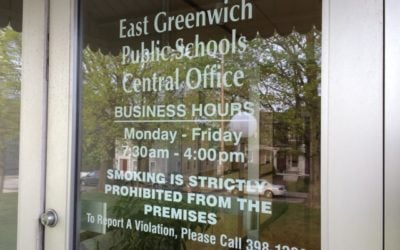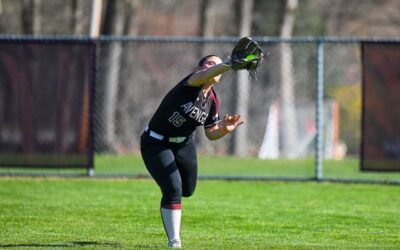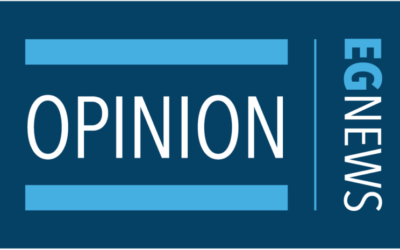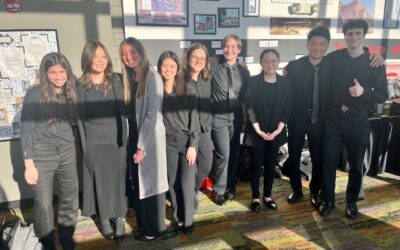Being a high school freshman is challenging enough – nevermind the addition of a global pandemic. Freshman at East Greenwich High School will start without the usual bevy of orientations and social opportunities. They will also be starting without the traditional academic supports typically available.
In a year where all sorts of ideas and experiments are being considered, members of the EGHS National Honors Society have come up with a positive way to help freshmen get acclimated, creating a Virtual Walk-In Center, an online forum.
 The plan is to use video-communication software – in this case, Google Meet. Students can join the center from 6 to 10 p.m., Sunday through Thursday. Once there, they’ll be greeted by NHS representatives and directed into individual meeting rooms where they can ask questions, brainstorm ideas, or review materials.
The plan is to use video-communication software – in this case, Google Meet. Students can join the center from 6 to 10 p.m., Sunday through Thursday. Once there, they’ll be greeted by NHS representatives and directed into individual meeting rooms where they can ask questions, brainstorm ideas, or review materials.
“In addition to providing the same kind of academic help that we could provide to students with an in-person walk-in center, the virtual center gives students the chance to have actual face-to-face interaction with other students,” noted NHS Vice President Rachel DiStefano. “It’s almost the equivalent of having a friendly face in the hallway.”
This is particularly important, said physics teacher Frank Lenox, because students don’t always take the initiative to reach out to teachers virtually.
“I think [students’] communication skills are geared more towards texting, and non-face-to-face methods,” he said. “It makes it more difficult for them to reach out to a teacher, so they’re probably going to opt to reach out to a friend.”
This is something that the Walk-In Center seeks to remedy, allowing freshmen to forge connections to upperclassmen and better integrate themselves into the community.
Additionally, the NHS will be hosting its usual peer tutoring sessions, though they too will be virtual. The peer tutoring service will focus on study habits and long-term relationships with students, while the Walk-In Center will focus on shorter, content-based queries.
Currently, faculty members use the Google suite of products to coordinate projects, assign tasks, and administer assessments. Lenox noted that the platform is useful, though certain convenient third-party extensions still need approval from technology committees.
“My hope is that technology helps bring us together to find a place where we can meet up virtually,” said EGHS librarian Michelle Steever. Steever – who aids students and teachers with formulating lessons, finding resources, and acquiring books – was heavily relied upon during the transition to remote learning in the spring. She suspects her workload will be equally substantial upon the start of school. “I hope we’re able to shift and still be able to do those meaningful projects in a different way,” she said.
Other EGHS faculty members expressed concern over the delivery of content. Theresa Garno, a social studies teacher, noted that vigorous discussions, lively debate, and engaging lectures – the hallmark of any history class – aren’t quite as effective when virtual. Moreover, students’ learning styles are not always compatible with remote learning.
“There are a lot of students who are self-motivated. They are interested in their own learning, and I think distance learning could be very engaging for them because there is a lot of free content out there,” she said. Other students require additional guidance and instruction to set them on the right track.
Students face similar dilemmas. Morgan Walsh, a rising sophomore at EGHS, expressed concern about the gap between distance-learners and those opting for the hybrid model. For Walsh, the difficulty of switching between physical and virtual learning formats on a near-daily basis is concerning.
“It will be harder to adapt from being online one day, to being in school the next. That might be a weird change,” she said. “When it gets back to normal routine, will it be difficult for kids to adapt?”
For Jessica Caterson, a rising senior and president of the EGHS chapter of the National Honor Society, forging connections with new teachers is most important. Caterson worries that teachers’ innate ability to connect with new students will be lost this coming school year.
“The relationship aspect of any learning situation is important, because it allows students to receive somewhat personalized guidance. I think that’s why education has remained in-person even though we have had the capability to share information online,” she said.
Hopefully, the Virtual Walk-In Center will allow for virtual connection and community building, perhaps the most important thing in restoring some level of normalcy.
David Amirsadri is a member of the class of 2021. He is treasurer of the National Honor Society.
EG News knows this is a challenging time for everyone. If you are able, consider supporting local news with a donation. Use the Donate button below or send a check to EG News, 18 Prospect St., EG, RI 02818. And if you need some help, let us know: contact [email protected]. Together we are stronger.





 Subscribe
Subscribe